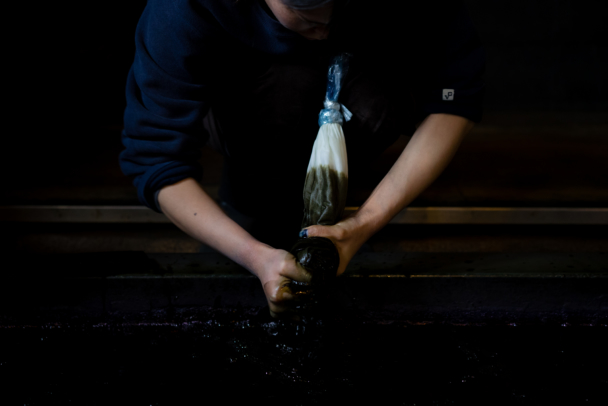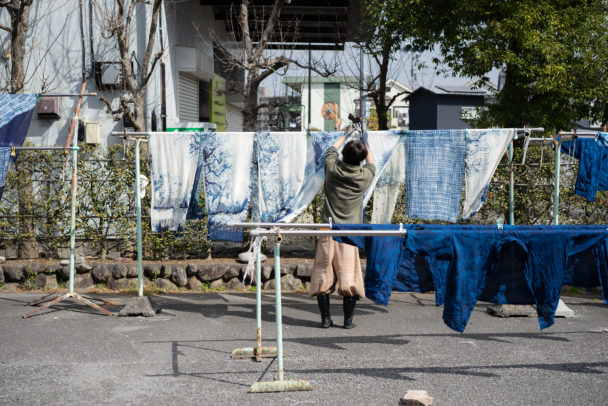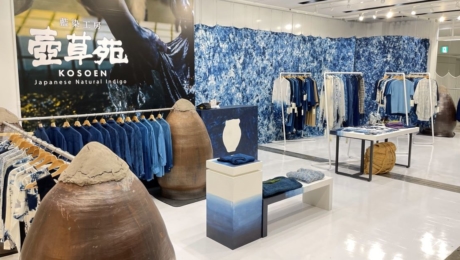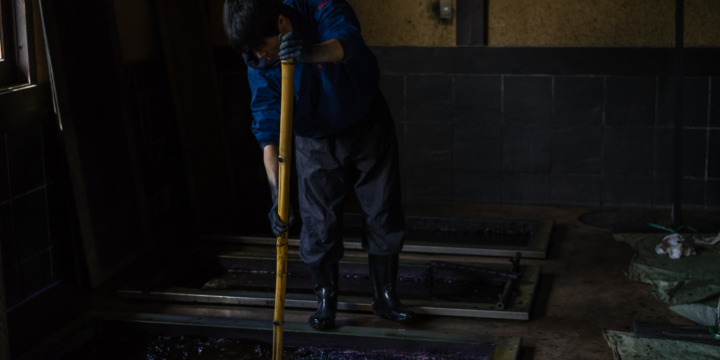
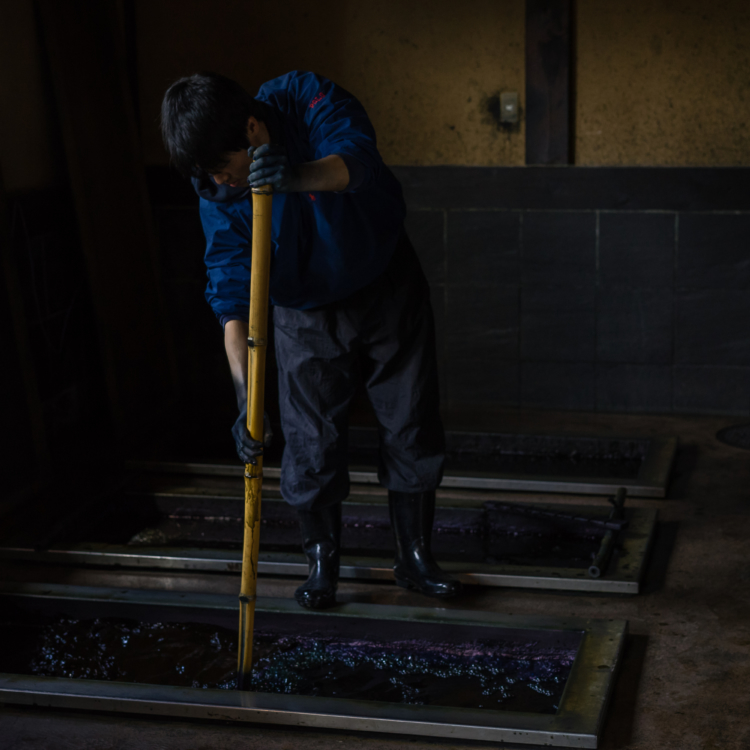
Japan Blue: A Deep, Elegant Hue Born from the Ancient Tradition of Indigo Dyeing
Since the Kamakura period (1185–1333), Ome City has been known for its textile production. During the Edo period, it gained immense popularity with the stylish Omejima fabric, which combined indigo-dyed cotton with approximately 10% silk. Although the tradition of indigo-dyeing had all but died out by the Meiji era (1868 – 1917), Murata Dyeing INDUSTRY, Inc., founded in Ome in 1919 as a producer of dyed thread for towels and textiles, encountered a rare remaining piece of Omejima fabric and succeeded in recreating it. With this discovery, they turned away from the chemical dyes they had previously used and returned to traditional indigo dyeing using only natural materials, and, in 1989, the indigo dyeing workshop KOSOEN was established.
KOSOEN employs a centuries-old natural indigo lye-fermentation method from the Edo (1603-1868) period, which was the golden age of Japanese indigo dyeing. They procuresukumo,the raw material for natural indigo dyeing made by drying and fermenting the leaves of thepolygonum tinctoriumindigo plant, from artisans in Tokushima. In the workshop, they add ash lye and wheat bran, and the mixture is stirred in a vat morning and night to produce a slow fermentation. Given the challenging and time-consuming nature of managing the naturally fermented indigo dye, modern methods often use chemical agents to achieve results more quickly. However, natural indigo has a clarity and depth unattainable with chemical dyes. Repeated dyeing coats the fabric with collagen, making it durable and resistant to fading. Additionally, natural indigo is said to have antibacterial, antimicrobial, and UV-protection properties. For these reasons, KOSOEN continues to use the traditional, labor-intensive dyeing method for their products, presenting twice-yearly apparel collections of stoles, shirts, dresses and more, featuring beautiful tie-dye and gradient effects, and receiving numerous orders from well-known brands.
Robert W. Atkinson, a British scientist who visited Japan during the Meiji period, was taken by Japanese indigo and memorably called it “Japan Blue.” In recent years, the ecological aspect of using only natural materials and producing a dye liquid that can be recycled as a high-quality fertilizer has garnered international attention. KOSOEN’s sincere, heartfelt care for artisanship is, no doubt, not only their foundation, but also that of a future, world-renowned Japan Blue.
